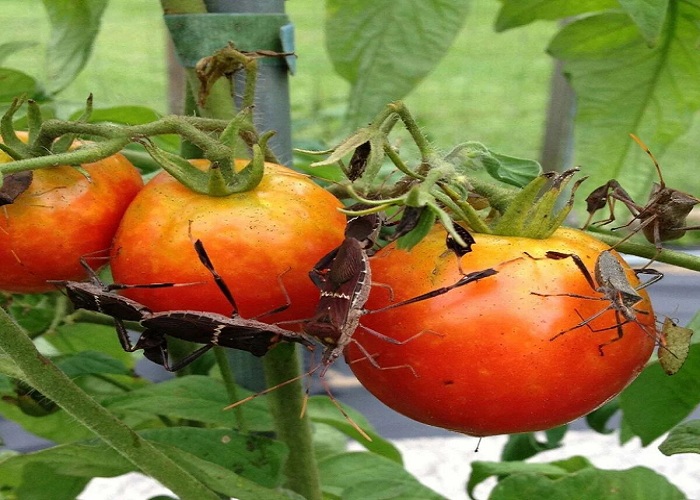Leaf-footed bugs are a widespread garden pest, and assassin bugs share a striking similarity with them.
When pests attack your garden, it might be frustrating, but there is no need to give up hope. To keep pests like leaf-footed bugs at bay, all you need is good garden care, a keen eye, and a few organic products.
If you’re dealing with a minor infestation, you may not have to be concerned about the damage these insects can cause. Leaf-footed bugs, on the other hand, can have a disastrous effect on your garden and fruit trees if an infestation develops out of control.
How can you get rid of leaf-footed bugs organically?
Handpicking
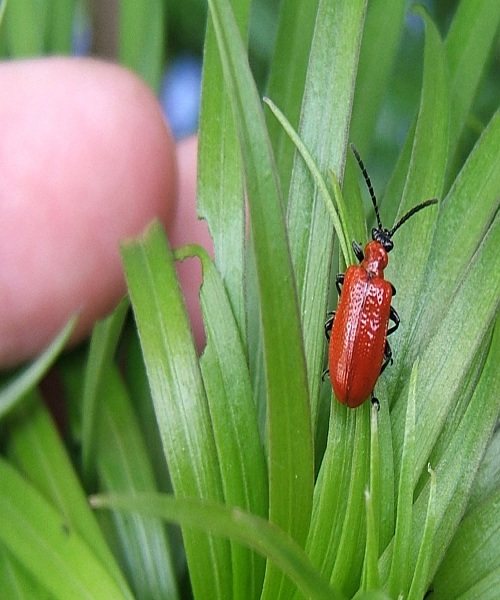
Handpicking these huge insects from your plants is typically the fastest and easiest approach to eradicate them from your garden. Remove them from your plants with garden gloves and either crush them or toss in a pail of soapy water. You’ll need to be vigilant and check on your plants on a regular basis if you choose this method. Insects are less active in the early morning or late at night, making it easier to trap them.
It’s a good idea to look for eggs when you’re handpicking. Check the stems of plants and the undersides of leaves for eggs, and smash them if you discover any. Make a duct tape loop over your fingers and collect the eggs with the adhesive side for easier cleanup.
Neem oil
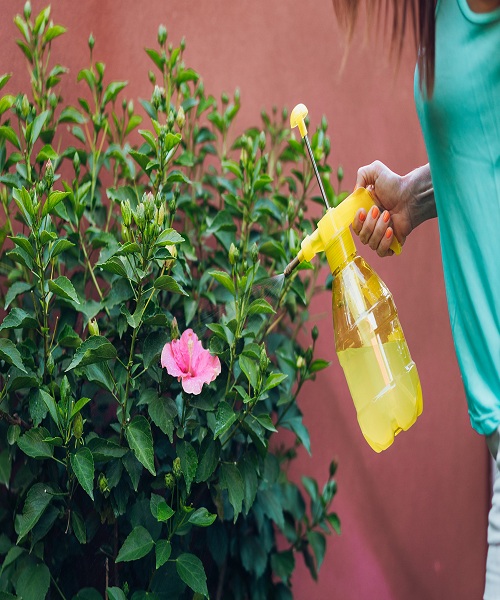
Neem oil is a highly efficient, all-natural insecticide derived from the oil taken from neem tree seeds. Be careful not to apply it in areas where pollinators may come across, being a general pesticide, it can kill any insect that comes into direct touch with the substance. Because of this, neem should never be used on flowers.
There are pre-made sprays of neem oil that you can buy, or you can make your own combination by adding Castile or Dawn dish detergent to a gallon of water and mixing thoroughly. Only use this spray in the evening to avoid burning the plant’s leaves from the sun.
In general, neem oil is efficient against most insects, but it may not be as effective against mature leaf-footed bugs. Because of this, you might want to use it along with another way to get rid of pests, like handpicking.
Sprays with insecticidal soap

Organic insecticidal soap sprays, like neem oil, are effective against leaf-footed bugs, especially nymphs. However, because these are broad-spectrum insecticides, they should be used with caution around beneficial insects like pollinators.
Beneficial insects
During different stages of their life cycles, leaf-footed bugs are attractive to other insects that prey on them. To take advantage of this, you may order and release assassin bugs into your garden, which will take care of your pest problem for you.
Allowing spiders to live in your garden or planting plants that attract helpful insects, such tachinid flies, who feed on leaf-footed bugs, is an alternative method.
Try any member of the umbellifer family as a companion plant, and let plants flower to make them more effective. These are a few of the best plants to try out:
- Carrots
- Dill
- Feverfew
- Chamomile
- The clover has a nutty flavor.
- Lace used by Queen Anne’s court
- Fennel
- Parsley
- Aster
Attract some birds
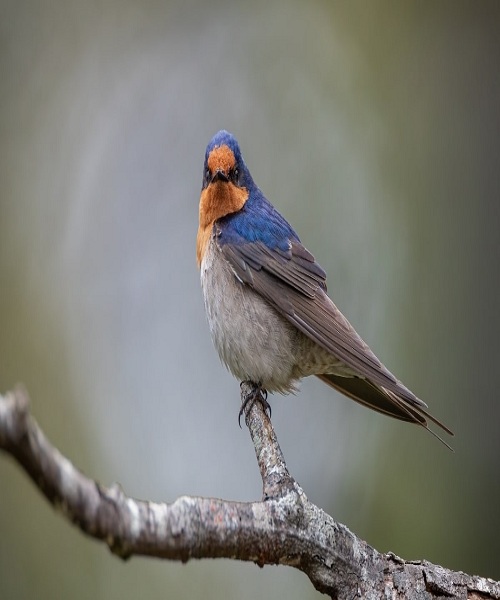
For birds, leaf-footed bugs are a treat. Installing bird feeders and houses, as well as a few bird baths, can help you get rid of pests in a more natural way. It won’t be long before robins, blue jays, and cardinals start showing up!
Diatomaceous Earth
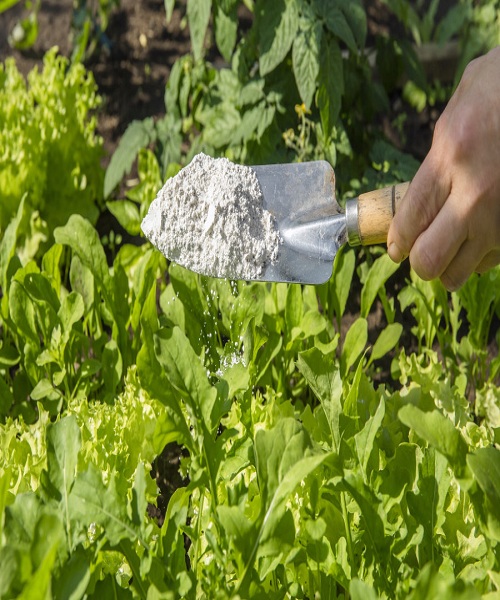
Fine, white diatomaceous earth (DE) is created from the fossilized remains of tiny sea organisms known as diatoms and is a byproduct of the mining and processing industry. The exoskeletons of any pests that crawl across the fossilized diatoms are slashed and dried up by the protective barrier.
Simply spray diatomaceous earth around affected plants to get rid of them. Keep in mind that pollinators can be harmed if they come into touch with DE. You’ll need to reapply diatomaceous earth after heavy rain or if your location has been experiencing high humidity in order to get the best results. To avoid irritating the respiratory tract, it’s best to wear a mask while using DE.
Floating row covers
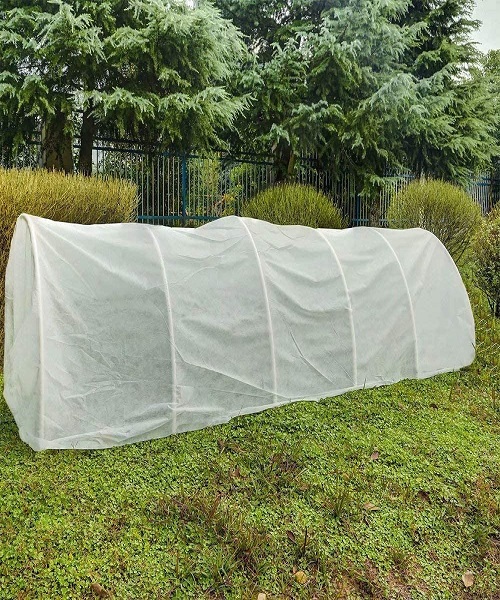
Pests are kept away from vital crops by using floating row covers, which are thin, permeable textiles stretched over garden beds or fitted over hoops and pegs. Covers are thick enough to keep pests away from your plants while yet allowing sunlight and rain to pass through. Floating row covers are a great weapon against leaf-footed bugs, as well as cabbage loopers and cucumber beetles.
Floating row covers work best when put in place early in the spring, before pests have a chance to develop, and left on for as long as feasible. Row covers can be left on plants like lettuce that don’t need to be pollinated, but if you’re growing fruiting plants like tomatoes and melons, the covers should be removed for a few hours each day to allow pollinators to do their work.
Proper care of the garden
There is no substitute for plain old-fashioned garden maintenance when it comes to eliminating leaf-footed bugs or any other garden pests. To prevent pests from spreading from last year’s garden to this year’s spring plantings, it is important to maintain a clean garden and remove diseased plants.
Remove any diseased or infected plant materials from your garden beds and backyards in the fall by burning, hot composting, or just bagging and discarding them.
Rotate your crops and place floating row covers early in the spring to keep pests at bay as they emerge from their winter slumber.

